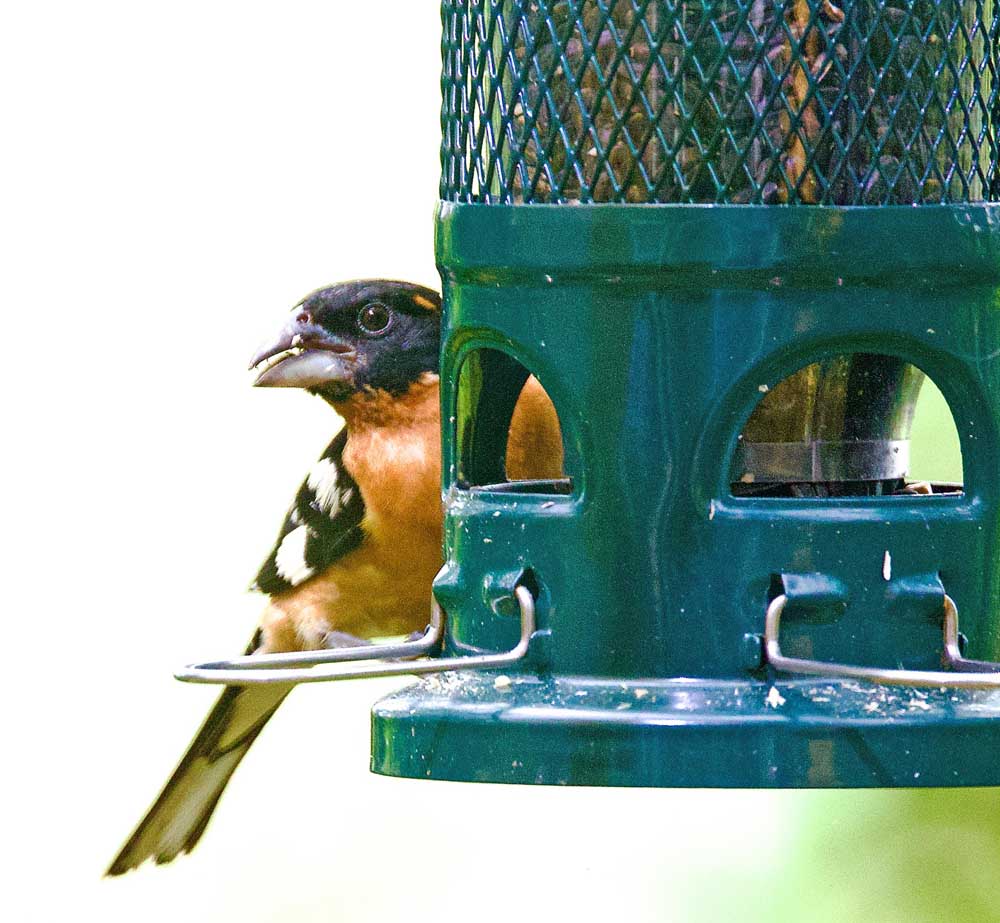Birding: Out and about with the birds
Published 11:44 am Saturday, July 22, 2023

- A pair of black-headed grosbeaks love black oil seed (sunflower seed). This male is more colorful than his female partner.
The enjoyable summer sun has been a treat, not only for me but also for the birds. Insects abound, fruit is ripening, more plants are flowering, and the bird baths are being well used for drinks and baths! Fledglings are everywhere and parents are still feeding them. It is a good time to observe the goings on between parents and their recently fledged young. Some species, like the osprey and bald eagle may still have young in the nest. Thus, I am seeing these adults on the hunt and young birds sitting up anxiously in their nests waiting for goodies to be delivered by their parents.
Trending
Singing on territories has almost come to a stop. However, I am still hearing the musicality of the purple finch and the Swainson’s thrush virtually all day. The sunflower feeders are inundated with purple finch adults and juveniles, and the three hummingbird feeders are almost always empty by noon. At least a dozen Anna’s and rufous hummingbirds have been observed hovering over the largest feeder. Six are waiting for a turn at getting a few sips of nectar. They are visiting the fuchsias too for both nectar and insects. What a sight it is!
The barn swallows nesting on the house fledged this past week. Cliff swallows can still be seen under the eaves of the Oysterville church. Red crossbills have begun to visit the bird bath. Other visitors to the bath include Wilson’s warbler, orange-crowned warbler, American robin, warbling vireo, cedar waxwing, song sparrow, spotted towhee, and the Swainson’s thrush. Other yard species include the Pacific slope flycatcher, red-breasted nuthatch, northern flicker, and the downy woodpecker. A daily average of twenty species is the norm these days.
Out and about on the Peninsula beaches has not produced much. Do you think the birds have gone into hiding since the fourth of July celebrations? The large numbers of people on the beach these days also seems to deter the birds from foraging and resting. Perhaps most species have gone to the far north end of our beaches where automobile traffic is prohibited and where there is protection for species like the snowy plover and the streaked horned lark. A few ring-billed gulls, California gulls, Caspian terns and about 100 sanderlings have been logged during two or three days on the beaches. More recently, a few bald eagles sitting on perches were watching for a meal and seven turkey vultures were sitting with wings spread on the warm beach sand. Brown pelicans are not here in the numbers of previous years to date, as far as I can tell. One flock of six were flying in and out of the ocean waves one day. I am keeping my eyes open for more.
Trending
The Ilwaco Harbor has good birding these days. Purple martins are still flying high to grab insects for their nestlings. Bald eagles and turkey vultures were feeding on carrion and a northern harrier flew by to check out the field behind the recycling bins. Flocks of Canada geese are feeding and resting on Baker Bay. Brewer’s blackbirds are foraging for seeds along the grassy edges of the port and barn swallows are flying overhead picking up insects on the wing. On occasion violet-green swallow, tree swallow and American goldfinches can also be seen.
Being out and about with the birds is relaxing and enjoyable. Birds matter! They are a delight! Now, is a good time to be out and about looking for the birds of summer. Happy birding!









